This report compares the budgets of Mahmoud Ahmadinejad and Hassan Rouhani during an eight-year period between March 2009 and March 2017 (Iranian calendar years 1388 to 1395).
It has been divided into 12 major sectors: welfare; health; military; security-judiciary; cultural; science and education; industry; housing and transportation; agriculture; local governments; executive; and “other agencies”. This list covers all ministries and organizations that have their own line items in annual budgets. These items differ from year to year, but the changes are minor and do not impact the conclusions of this study.
Of the eight annual budgets covered, the first five were drawn up under President Ahmadinejad and next three under President Rouhani. By assessing their budget allocations, we can gauge their policy priorities and determine how far these aligned with their promises to the electorate.
To gain an overall picture of how the administrations compare, we can examine the budget share distributed to these 12 sectors in 2009 and 2017 (1388 and 1395): the first and last years under consideration.
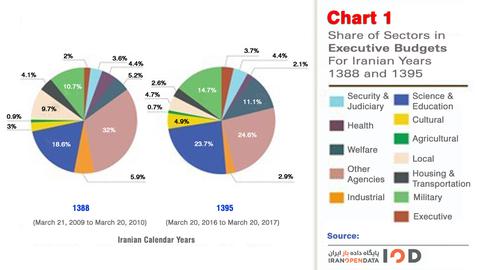
These charts show that the share allocated to the welfare, military, cultural and executive sectors grew considerably — by a factor of 1.5 to two — while the share given to health, industry and local governments almost halved.
It must be noted that the category of “other agencies” covers many areas, and in most years it received the majority of the budget. In 2012 (1391), however, its share was far lower than other years, resulting in a surge in share allocation in other sectors.
Also to note is that this report discusses the share proportion of each sector, not the overall amount in rials.
1. The Welfare Sector
The welfare sector comprises around 10 executive agencies, including the Ministry of Cooperatives, Labor, and Welfare and Social Security. Between 2009 and 2017, its budget share showed a steady increase, from 5 percent to 11 percent.
As the chart below shows, the welfare budget increased under President Ahmadinejad, but remained around 11 percent under Rouhani. This suggests that the former was more focused on delivering public services than his successor.

2. The Health Sector
The budget share of the Ministry of Health and around 10 other agencies in the health sector fluctuated during the eight years under review. In the first two years, under Ahmadinejad, the share of the budget for this sector was 4.4 percent. However, in 2011 (1390) it plunged and did not return to its former level for another two years.
Under Rouhani, the share of this sector was at first increased to 4.6 percent but then dipped. In 2017 (1395), it suddenly dropped to 2 percent when the funds earmarked for this sector under Provision B of Article 34 of the 5th Five-Year Development Plan (2010-2015) were removed.
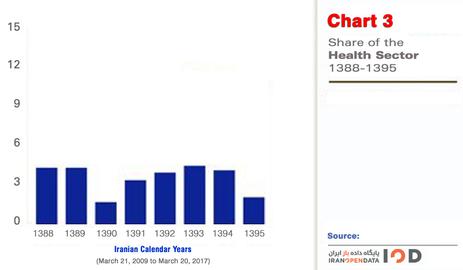
3. The Military Sector
The military sector consists of around 20 military agencies that enjoy a relatively high share of the budget. As the chart below shows, the share of this sector grew steadily under Ahmadinejad. Under Rouhani, the amount of money allocated to this sector in absolute terms was higher than it was under his predecessor. However, its total share did not increase and remained around 14 percent.
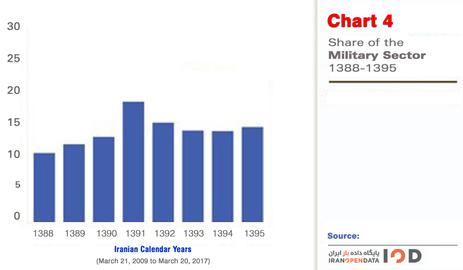
4. The Security-Judiciary Sector
The security-judiciary sector consists of around 15 executive agencies, including the Ministry of Justice and the police. Overall, it tends to receive between 3 and 4.5 percent of the total budget for executive agencies.
However, the two administrations have approached this sector very differently. With the exception of 2012 (1391), its share decreased each year under Ahmadinejad, while under Rouhani it grew.
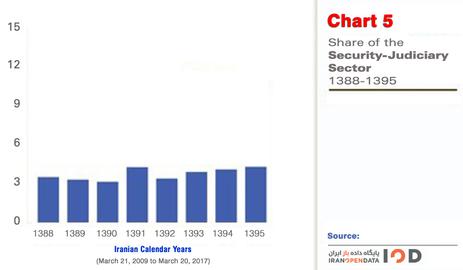
5. The Cultural Sector
The cultural sector comprises around 25 agencies from the Supreme Leader’s University Representatives Organization to the Cultural Heritage, Handicrafts and Tourism Organization of Iran. In most years, the share of this sector has hovered between 2.5 percent and a little under 5 percent. Setting aside 2012 (1391), it dropped slightly each year under Ahmadinejad, but increased noticeably under Rouhani.
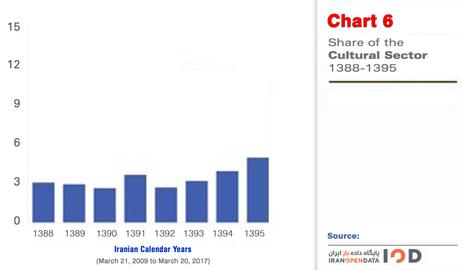
6. The Science and Education Sector
The science and education sector covers around 150 universities, educational institutions and research institutes. In the years under review, its budget share ranged from 16 to 25 percent, and grew overall during this period. It showed an especially marked increase under Rouhani.
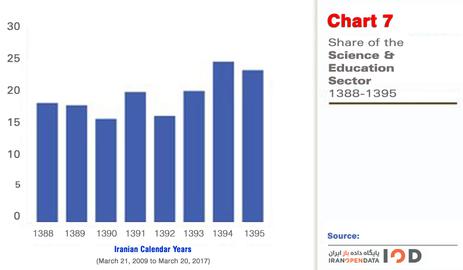
7. The Industrial Sector
The budget for the industrial sector covers around 10 agencies that oversee or set policies for various industries. It includes the Ministry of Industry, Mine and Trade, the Atomic Energy Agency and the Ministry of Energy. Ahmadinejad assigned a bigger budget allocation than Rouhani to this sector, and during the eight years its overall share almost halved.
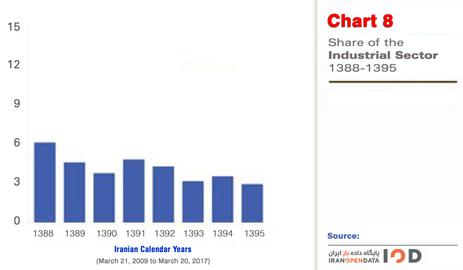
8. The Housing and Transportation Sector
This sector covers Ministry of Roads and Urban Development and its subsidiaries. From 2009 to 2017, it received between 2 and 4 percent of the total budget. As the following chart shows, its budget share fluctuated under Ahmadinejad, but stabilized under Rouhani at 2 to 2.5 percent.
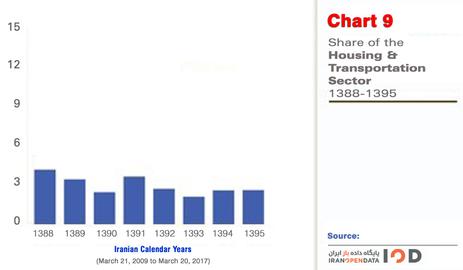
9. The Agricultural Sector
The agricultural sector covers the Environmental Protection Agency, Ministry of Agriculture and their subsidiaries. Throughout the eight years, under both administrations, it received the smallest share of the budget: between 0.6 and 1 percent. Notably, it fell from close to 0.9 percent under Ahmadinejad to less than 0.7 percent under Rouhani.
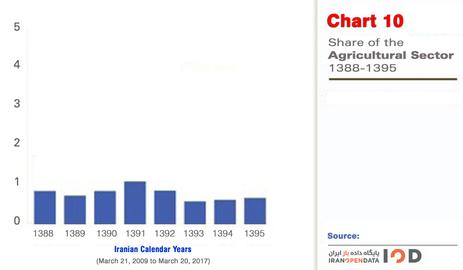
10. The Local Governments Sector
The local governments' sector includes Association of Municipalities, metropolitan city governments, and local executive agencies. Its budget share fell consistently during both administrations, and by 2017 it had dropped to almost half its 2009 level.
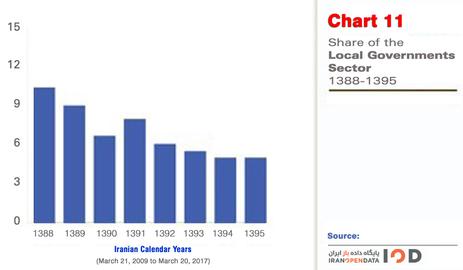
11. The Executive Sector
The executive sector covers institutions such as the Assembly of Experts and the office of the president. Except for 2012 (1391), this sector usually received 2 to 3.7 percent of the budget. If we disregard the 2012 spike under Ahmadinejad, its share rose steadily during this period, from 2 percent in 2009 to 3.7 percent in 2017.
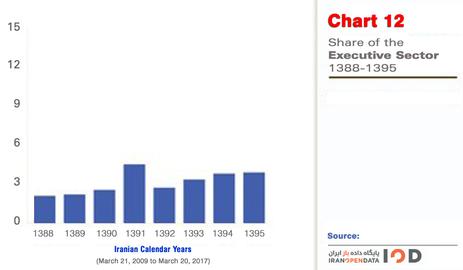
Conclusion
Budget allocations under Ahmadinejad and Rouhani from 2009 to 2017 clearly contain significant differences. Ahmadinejad’s focus on public services prompted an increase in the welfare budget during his second term. Conversely, Rouhani’s closer ties to academia and the higher education sector meant he allocated more to the science and educational sector budget during his first term.
Under Ahmadinejad, the industrial sector had a larger budget allocation, while under Rouhani the cultural sector enjoyed a bigger share. It should be noted that this funding increase did not only affect culture and arts centers, but also the budgets of Islamic publicity institutions that are often critical of Rouhani’s government.
Under Ahmadinejad, the health sector also took a larger share of the budget, despite Rouhani’s commitment to expanding healthcare.
There are similarities, however. For example, the military, local governments, and agricultural sectors largely received the same share of the budget under both Ahmadinejad and Rouhani.
It is important to note that budget allocations do not tell the whole story of governments’ exploitation of resources. In analyzing the housing sector, for instance, the Central Bank funding used by Ahmadinejad to finance the Mehr Housing project was not reflected in his budgets.
This report is based on the following data provided by Iran Open Data:
The executive budget summary for the year 1388
The executive budget summary for the year 1389
The executive budget summary for the year 1390
The executive budget summary for the year 1391
The executive budget summary for the year 1392
The executive budget summary for the year 1393
The executive budget summary for the year 1395
visit the accountability section
In this section of Iran Wire, you can contact the officials and launch your campaign for various problems




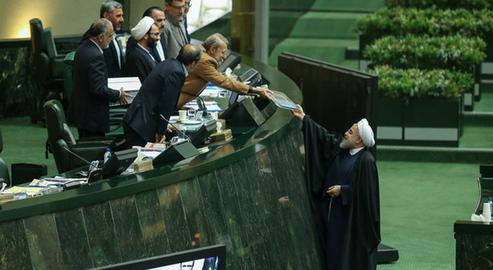



















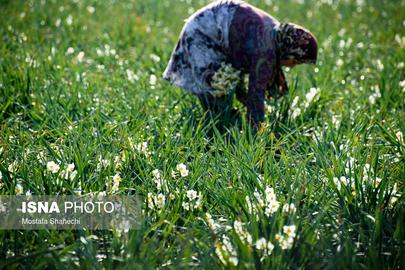
comments